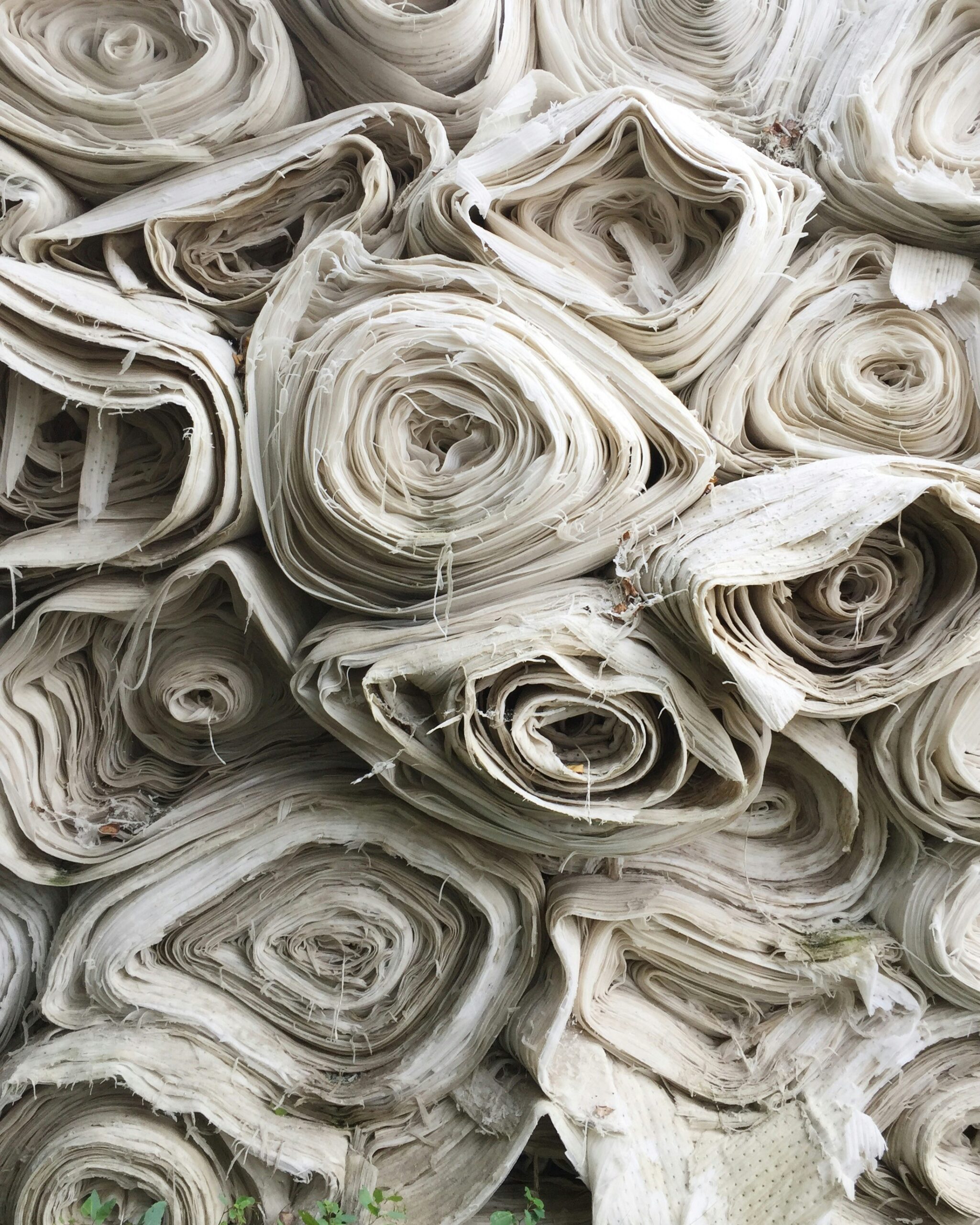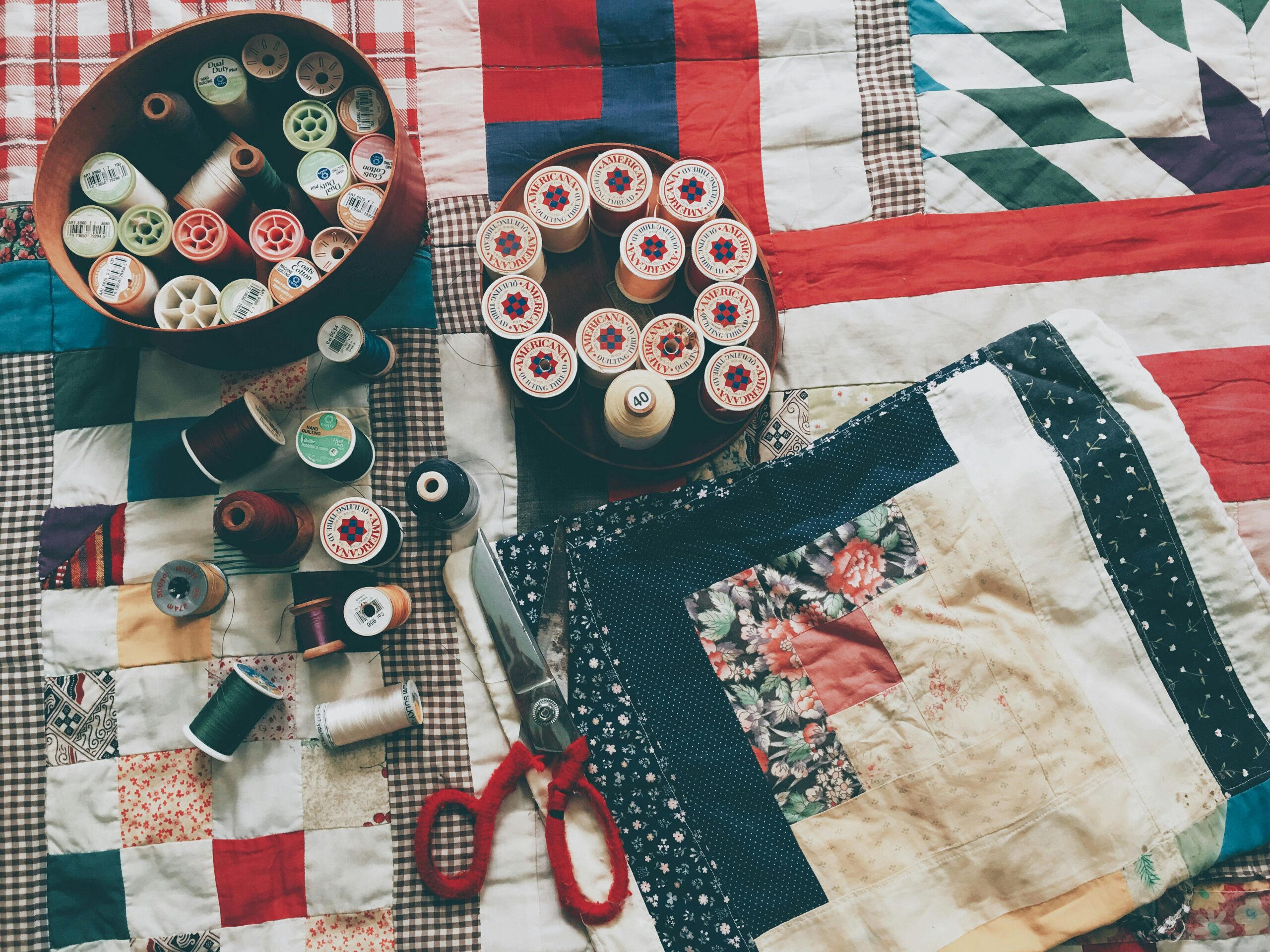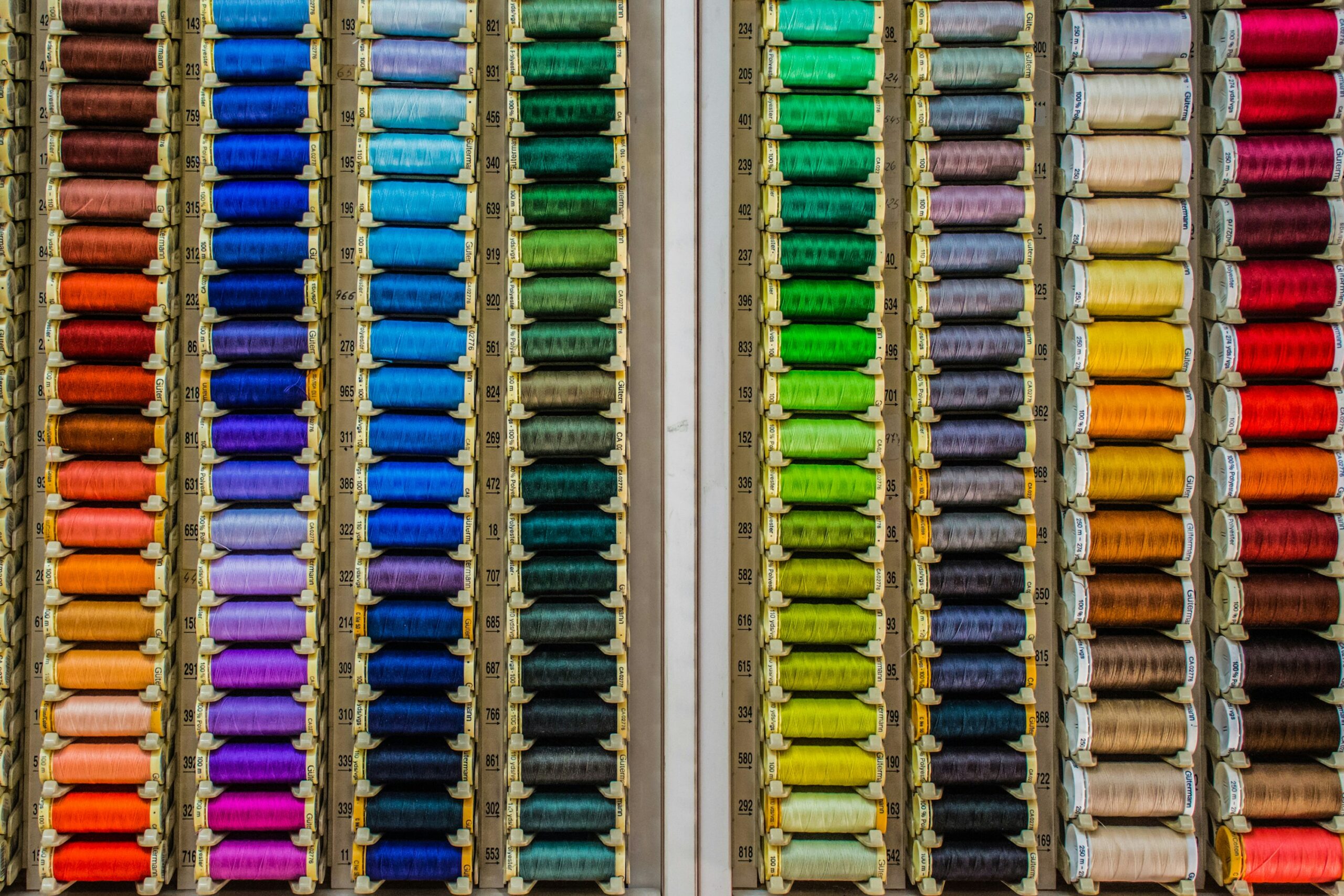Textile Materials in Tailoring: Types of Materials and Their Properties
Introduction to Textile Materials
Textile materials play a fundamental role in the field of tailoring, impacting the appearance, comfort, and durability of the finished products. Choosing the right material is essential for the success of any tailoring project, as each type of fabric comes with its own characteristics and properties. These include texture, weight, elasticity, and the way a material behaves during processing and use. Thus, tailors must be well informed about the various categories of materials available, which allows them to make informed choices and adapt projects to the specific needs of clients.
For example, cotton is a popular material due to its comfort and ease of maintenance, often used for everyday garments. On the other hand, wool is appreciated for its insulation capacity and elasticity, making it ideal for cold-season clothing items. Polyester and other synthetic fibers are often used because of their resistance to wrinkling and durability, which makes them suitable for a variety of applications, including sportswear.

In addition, the texture and weight of textile materials can dramatically influence tailoring behavior. For instance, light and flowing fabrics are ideal for airy dresses, whereas heavier fabrics are better suited for structured garments. Another important aspect is the way in which materials can be worked with; some may require specialized techniques or specific tools, which complicates the tailoring process.
Therefore, a thorough knowledge of textile materials is essential to ensure both an aesthetic and functional final outcome for any tailoring project. This awareness can make the difference between a successful product and a failed one.
Types of Textile Materials
In the field of tailoring, knowing the different types of textile materials is essential for selecting the most appropriate option for a given project. Among the most common materials are cotton, silk, wool, and various synthetic materials, each having distinct characteristics and varied applications.
Cotton is one of the most used materials in tailoring, valued for its comfort and versatility. It is available in multiple weights and textures, making it ideal for a wide range of clothing, from T-shirts to underwear. Cotton absorbs moisture, which makes it an excellent choice for garments worn in the summer.
Silk, on the other hand, is known for its elegant and smooth appearance. This natural material features a characteristic sheen and soft texture, being used especially for evening dresses, blouses, and scarves. Silk has excellent thermal properties, retaining heat during the cold season and offering coolness during the summer.
Wool is another popular material, renowned for its durability and insulating ability. It is frequently used in the making of coats, sweaters, and hats. Wool has a unique ability to repel water, which makes it ideal for unfavorable weather conditions.
In addition, synthetic materials such as polyester and nylon are gaining more ground due to their resistance and ease of maintenance. They are often used in sportswear and items that require higher resistance to tearing and wear. Other types of textile materials include linen, which is renowned for its breathability and durability, and denim, popular in the creation of casual garments.
In conclusion, the choice of the appropriate material in tailoring depends on the desired project and its specific requirements. Knowing the characteristics of each type of textile material is essential to ensure the success of the chosen tailoring project.
Properties of Cotton
Cotton is a natural textile material that is highly popular among tailors due to its remarkable technical and aesthetic properties. One of the most important characteristics of cotton is its moisture absorption. It has the ability to absorb and quickly release perspiration, making it ideal for summer clothing or for sporting activities. This property helps maintain optimal comfort, reducing the risk of skin irritations and contributing to a feeling of well-being throughout the day.
The durability of cotton is another noteworthy aspect. Although this material is perceived as soft and comfortable, it is actually very resistant. Garments made of cotton can withstand repeated use and frequent washing without losing their shape or color. This durability makes it a smart choice for tailoring projects intended to last over time, such as everyday clothing or work attire.
The versatility of cotton is also a key feature. This material is available in a variety of weights and textures, allowing designers to use it in numerous applications, from casual wear to more sophisticated garments. From plain cotton for T-shirts to cotton with prints or embroideries for elegant dresses, the options are practically unlimited. This versatility significantly influences both the cut and the overall design of the clothing, offering diverse possibilities for creating original and functional creations.
Properties of Silk
Silk is a textile material highly valued in tailoring because of its elegant appearance and unique properties. This natural fiber comes from the cocoons of silkworms and is recognized for its soft and lustrous texture. Silk has the ability to confer a sophisticated look to any garment, considerably enhancing the final design. Due to its delicate nature, it can be easily sewn but requires special care in handling, given its fragility.
One of the most important advantages of silk is its ability to regulate temperature, so that garments made from silk offer comfort in both warm and cold seasons. Additionally, silk possesses hypoallergenic properties, making it ideal for people with sensitive skin. The natural shine of silk is another factor that makes it attractive for tailors, allowing them to create garments that stand out through their elegance.

However, using silk in tailoring comes with some disadvantages as well. For example, this material is more susceptible to stains and damage, requiring more careful care and cleaning compared to other types of fabrics. Moreover, its durability can be an issue since silk may tear or lose its lustrous appearance over time. Therefore, it is essential that designers be aware of these aspects when choosing silk as the main material for creating garments.
Properties of Wool
Wool is a natural textile material that stands out for a range of unique properties, which makes it extremely appreciated in tailoring. Among the most important characteristics of wool are its thermal insulation, elasticity, and resistance to stains. These properties result from its fibrillar structure, which allows air to circulate and maintain a constant temperature, thus providing comfort in both colder and warmer conditions.

The thermal insulation of wool is an essential attribute, as wool fibers trap air and form a natural barrier against the cold. This insulation ability makes wool an ideal material for making jackets, coats, and other items intended for the cold season. In addition, wool can absorb moisture without feeling wet on the skin, thereby contributing to increased thermal comfort.
Elasticity is another distinctive property of wool. Due to its structure, wool can stretch and then return to its original shape, making it suitable for garments that require a degree of flexibility. This characteristic is particularly important in frequently worn clothing, as it allows freedom of movement and contributes to the durability of the final product.
Surprisingly, wool also shows good resistance to stains. This characteristic comes from its hydrophobic nature, which makes it resistant to dirt and easier to clean than other types of fabrics. This aspect makes wool a practical material for clothing that can be worn in various environments without the worry of rapid deterioration.
Synthetic Materials in Tailoring
Synthetic materials have become increasingly popular in the field of tailoring due to their versatility and durability. Among the most used types of synthetic materials are polyester and nylon, each having distinct characteristics that make them suitable for various applications. Polyester, for example, is recognized for its resistance to wrinkling, fading, and flammability. This material is often used in the production of sportswear due to its quick-drying properties and ability to repel moisture.
Nylon, on the other hand, is valued for its flexibility and strength. It is a lightweight yet extremely durable material, often used in products that require additional strength, such as bags or equipment for adventure sports. Both synthetic materials can be found in contemporary fashion, as designers capitalize on these properties to create durable products that can withstand daily use.

However, the use of synthetic materials in tailoring can also present some disadvantages. For example, polyester and nylon are not biodegradable, which can contribute to the global textile waste problem. Additionally, these materials may be less breathable compared to natural fibers, which can make them less comfortable under certain environmental conditions.
Despite these negative aspects, the advantages of synthetic materials continue to attract the attention of tailors and designers, who explore new techniques and combinations to maximize the potential of these innovative textiles.
Choosing the Right Material for Different Projects
Choosing the correct material is essential in tailoring because each type of project will require certain material characteristics. Before starting a project, it is important to evaluate the intended purpose and desired style of the finished product. For example, for everyday wear such as T-shirts or pants, cotton or polyester blends are often the most appropriate due to their comfort and ease of maintenance.
If the project aims at creating a formal garment, such as a dress or a suit, it is recommended to opt for more sophisticated materials, such as silk, wool, or synthetic fabrics with an elegant appearance. These materials add refinement and can dramatically influence how the garment fits and behaves. It is also important to consider the season; for example, lighter materials are more suitable for summer, while thicker ones like wool are ideal for winter.
In addition to the type of project and season, the budget is another essential factor to consider. There is a variety of material options available on the market, ranging from the most affordable, such as cotton, to luxurious fabrics that can be more expensive. It is advisable to compare prices and qualities of materials before making a final decision.
Furthermore, consulting with specialists or experts in tailoring can provide valuable insights regarding the selection of appropriate materials. This can help not only optimize the budget but also achieve exceptional results in tailoring projects.
Techniques for Caring for Textile Materials
Proper care of textile materials is essential to ensure their longevity and appearance over time. Each type of textile material requires a specific approach, depending on its properties. We begin by discussing washing. It is important to always read the care label to determine the washing temperature and the recommended method. Generally, delicate materials such as silk or lace require hand washing or a gentle cycle in the washing machine. On the other hand, more durable materials like cotton can be washed at higher temperatures.

Regarding detergent, choose one that is compatible with the type of material. Detergents formulated for delicate fabrics can prevent the premature wear of fibers. It is also essential to avoid using bleach, especially on colored materials, as it can cause fading.
After washing, drying is another crucial stage. Some textile materials, such as wool and silk, should not be machine-dried but left to air-dry on a flat surface. Synthetic materials, however, can be tumble dried using a gentle cycle. Proper care during drying not only prevents the formation of wrinkles but also maintains the integrity of the fibers.
Lastly, storage is equally important. Textile materials should be stored in a cool, dry place, avoiding moisture, which can promote mold growth. Using maintenance paper or fabric bags to cover delicate items is an effective method to protect them. Paying attention to these care techniques will significantly extend the life and appearance of your favorite textile materials.
Current Trends in the Use of Textile Materials
The fashion industry is in a continuous state of transformation, and current trends in the use of textile materials reflect an increasing concern for sustainability and ecology. Designers and tailors worldwide are beginning to prioritize eco-friendly materials that not only reduce environmental impact but also offer consumers healthier products. For example, organic cotton, ethically sourced wool, and natural fibers such as linen and bamboo are at the top of preferences.
Along with eco-friendly materials, another notable trend in tailoring is the use of recyclable textiles. These not only help reduce waste but also promote a longer life cycle for clothing products. Yarns made from recycled plastic and materials from repurposed old textiles offer not only innovative solutions but also a modern and avant-garde look that captures consumers’ attention.
In addition to sustainability, another recent trend in the use of textile materials is the emphasis on personalization. Tailors are exploring new techniques that allow the integration of technical-scientific textiles, which improve the comfort and functionality of garments. These materials have innovative properties, such as water resistance, breathability, or temperature regulation, which meet the needs of modern consumers who are increasingly focused on the practicality of products. Thus, current trends in the use of textile materials not only enhance the appearance of a product but also significantly contribute to the ecological awareness of the fashion industry.
Conclusion
Analyzing textile materials from the perspective of tailoring, it is evident that choosing the appropriate type of material plays a crucial role in successfully completing any sewing project. Whether we talk about cotton, wool, polyester, or silk, each material has unique characteristics that can influence both the appearance and durability of the final product. For example, cotton is appreciated for its breathability, while polyester offers resistance and ease of maintenance. In contrast, silk adds a luxurious appearance but requires special care.
Furthermore, it is important to mention that the choice of textile material depends not only on its inherent characteristics but also on the type of project to be undertaken. Projects for everyday wear may benefit from more durable materials, while occasion pieces might be more ephemeral and, therefore, use more delicate materials. For this reason, knowing the properties of each material and its applications in tailoring becomes essential for a desired outcome.
In the end, the ability to correctly select the textile material is a defining element in the success of the tailoring craft. Whether you are a beginner tailor or one with experience, familiarizing yourself with the various types of materials and their properties will significantly improve the quality of your work. Taking into account the aspects discussed in this article can contribute to the creation of garments that are not only aesthetically pleasing but also functional, thereby enriching the experience of everyone involved in the sewing process.
Why is it crucial to understand the different types of textile materials when embarking on a tailoring project?
Understanding each type of textile material ensures an optimal match between what is desired (whether a garment or a decorative object) and the specific properties of each material. This directly impacts the comfort, aesthetic appearance, and lifespan of the final product. For example, cotton is appreciated for its breathability and ease of care, while silk adds a touch of refinement but requires special cleaning. By deepening knowledge about materials, tailors can make informed selections, ensuring a high-quality result and a pleasant experience for the wearer.
What are the main differences between cotton and silk regarding their use in tailoring?
Cotton is a natural material that is easy to work with and suitable for a wide range of projects—from casual clothing to bed linens—due to its durability and moisture-absorbing capacity. It provides comfort and longevity, making it ideal for everyday outfits. On the other hand, silk stands out with its fine texture and distinctive sheen, bringing an elegant and sophisticated air to garments. Silk regulates body temperature and is excellent for elegant items such as evening dresses or precious blouses. However, it requires extra care since it stains and deteriorates more easily.
What key properties make wool a suitable material for winter clothing?
Wool excels in its thermal insulation capacity, retaining body heat even in moderately humid conditions. Its fiber structure traps air, providing a natural barrier against the cold, making wool an ideal material for jackets, coats, sweaters, and other cold-season items. Additionally, wool can absorb moisture without feeling wet on the skin, contributing to enhanced thermal comfort. Its elasticity allows it to stretch and return to its original shape, providing freedom of movement and durability. Its resistance to stains and dirt also makes wool an excellent choice for winter garments.
Why have synthetic materials, such as polyester and nylon, become so popular in contemporary fashion?
Synthetic materials offer several advantages, including durability, ease of care, and relatively low production costs. Polyester, for example, resists fading and wrinkling, dries quickly, and can be blended with other fibers to enhance properties such as elasticity. Nylon is recognized for its resistance to wear and its lightweight nature, making it ideal for sports equipment or accessories. Due to these qualities, designers and clothing manufacturers increasingly use synthetic materials to create practical and long-lasting pieces.
How does the choice of material influence the type of tailoring project?
The project type determines the functional and aesthetic requirements, which in turn dictate the choice of material. For instance, for a breezy summer dress, light fabrics such as thin cotton or voile are preferred because they allow air circulation. In contrast, for a jacket or coat, denser materials like wool are used to provide structure and retain heat. If a luxurious look is desired, silk or velvet can be ideal options, while for sportswear, materials with quick-drying properties and enhanced durability are chosen.
What steps should be followed to properly care for textile materials and extend their lifespan?
The first step is to consult the care label, where the washing temperature, detergent type, and recommended drying methods are specified. Delicate materials, such as silk, may require hand washing or dry cleaning, while more resilient ones, such as cotton, typically withstand higher machine-wash temperatures. Air drying, especially for wool and silk, prevents deformation and helps maintain the quality of the fibers. Additionally, storing items in a dry, well-ventilated environment away from direct sunlight ensures that colors and textures are preserved for a longer period.
How do current trends influence the choice of textile materials in the fashion and tailoring industry?
In recent years, the focus on sustainability and ethics has shaped the preferences of designers and tailors, who increasingly seek environmentally friendly materials such as organic cotton, responsibly sourced wool, or recycled fibers. Furthermore, technological innovations have led to the development of smart materials capable of regulating body temperature or resisting moisture. Consequently, the choice of material now considers not only aesthetics but also ecological impact and the comfort provided in everyday life.
What are the advantages and disadvantages of synthetic materials compared to natural ones in tailoring?
Synthetic materials, such as polyester and nylon, are characterized by lower costs, ease of care, and resistance to wrinkling and fading. They are ideal for projects that require durability and resilience against external factors, such as sportswear. Conversely, these materials are not biodegradable and can be less skin-friendly, potentially causing discomfort if not blended with natural fibers. On the other hand, natural materials like cotton and wool offer breathability, moisture absorption, and a pleasant feel on the skin, although they often require more careful maintenance and may come at a higher cost.
In which situations is it preferable to use blends of fibers rather than a single type of material?
Blends of fibers can address the shortcomings of one material while enhancing the qualities of another. For example, cotton combined with elastane (an elastic synthetic fiber) provides both comfort and a tighter fit, making it appreciated in the denim industry or for leggings. Other blends, such as wool with acrylic, increase resistance to wrinkling and maintain a pleasant appearance after repeated washing. Also, adding small amounts of synthetic fibers to natural materials can increase durability without completely sacrificing the comfort or traditional appearance of the fabric.
Why is it important for tailors and designers to have a good knowledge of the textile materials available on the market?
A deep understanding of the characteristics and properties of textile materials enables tailors and designers to create superior quality products tailored to the needs and preferences of clients. This knowledge helps to avoid costly mistakes related to matching the material with the project type and allows for better control over the creative process. Moreover, making the correct material choices can reduce resource wastage and contribute to a more sustainable approach in the fashion industry, bringing benefits both to the industry and to the environment.








